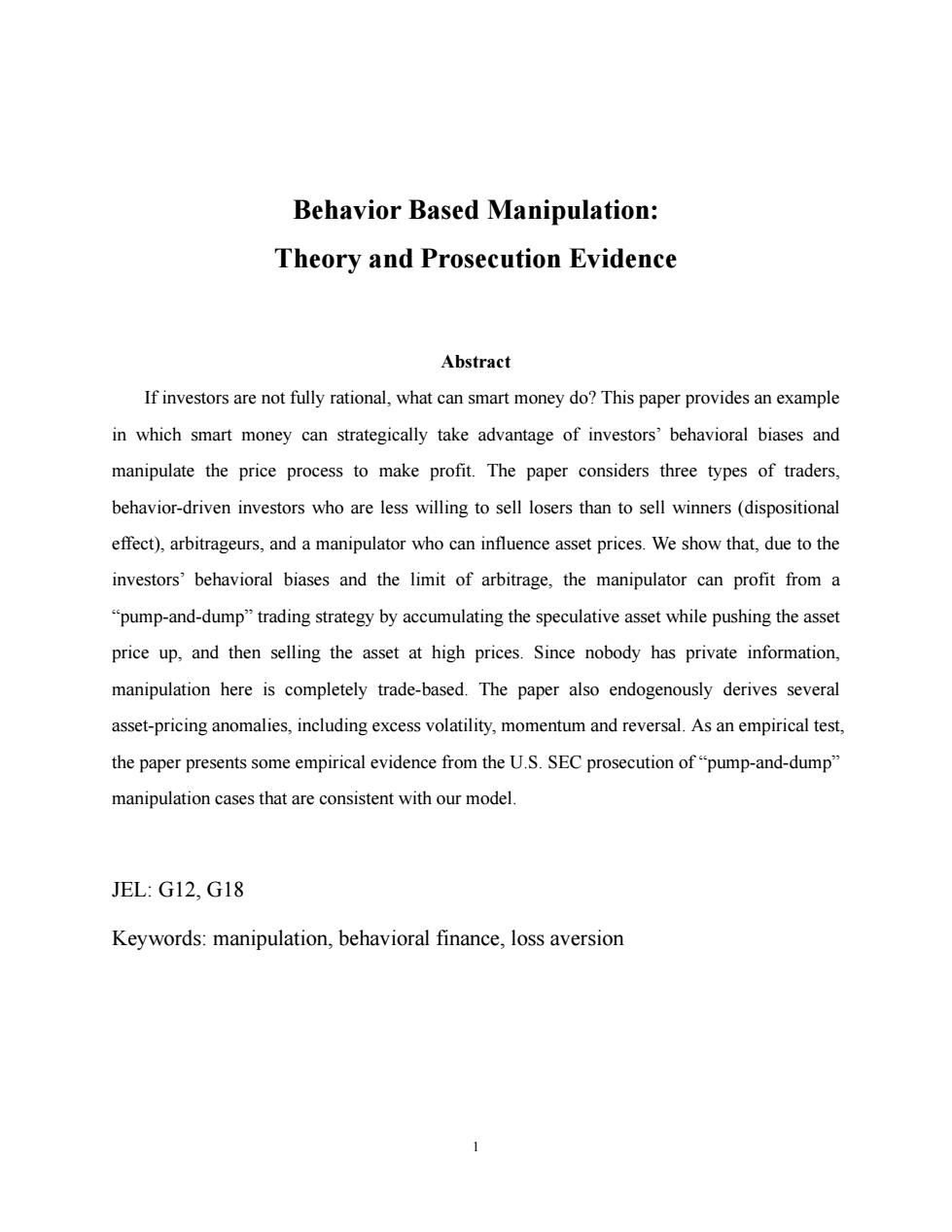正在加载图片...

Behavior Based Manipulation: Theory and Prosecution Evidence Abstract If investors are not fully rational,what can smart money do?This paper provides an example in which smart money can strategically take advantage of investors'behavioral biases and manipulate the price process to make profit.The paper considers three types of traders, behavior-driven investors who are less willing to sell losers than to sell winners (dispositional effect),arbitrageurs,and a manipulator who can influence asset prices.We show that,due to the investors'behavioral biases and the limit of arbitrage,the manipulator can profit from a "pump-and-dump"trading strategy by accumulating the speculative asset while pushing the asset price up,and then selling the asset at high prices.Since nobody has private information, manipulation here is completely trade-based.The paper also endogenously derives several asset-pricing anomalies,including excess volatility,momentum and reversal.As an empirical test, the paper presents some empirical evidence from the U.S.SEC prosecution of"pump-and-dump" manipulation cases that are consistent with our model. JEL:G12,G18 Keywords:manipulation,behavioral finance,loss aversion1 Behavior Based Manipulation: Theory and Prosecution Evidence Abstract If investors are not fully rational, what can smart money do? This paper provides an example in which smart money can strategically take advantage of investors’ behavioral biases and manipulate the price process to make profit. The paper considers three types of traders, behavior-driven investors who are less willing to sell losers than to sell winners (dispositional effect), arbitrageurs, and a manipulator who can influence asset prices. We show that, due to the investors’ behavioral biases and the limit of arbitrage, the manipulator can profit from a “pump-and-dump” trading strategy by accumulating the speculative asset while pushing the asset price up, and then selling the asset at high prices. Since nobody has private information, manipulation here is completely trade-based. The paper also endogenously derives several asset-pricing anomalies, including excess volatility, momentum and reversal. As an empirical test, the paper presents some empirical evidence from the U.S. SEC prosecution of “pump-and-dump” manipulation cases that are consistent with our model. JEL: G12, G18 Keywords: manipulation, behavioral finance, loss aversion